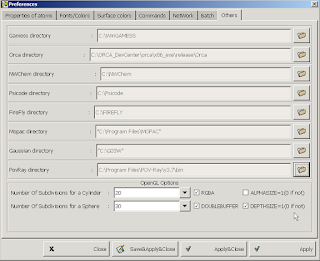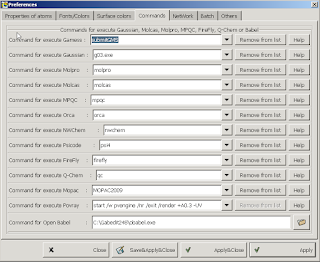This includes the compilation of ECCE (although owing to updates meant to rectify that at https://github.com/FriendsofECCE/ECCE this isn't necessarily something you'd notice) and NWChem.
Anyway, here's how to build nwchem with openmpi support under debian stretch:
1. Download source code and patches
sudo mkdir /opt/nwchem -p sudo chown $USER:$USER /opt/nwchem cd /opt/nwchem mkdir patches6.6 cd patches6.6 for i in Tddft_mxvec20.patch.gz Tools_lib64.patch.gz Config_libs66.patch.gz Cosmo_meminit.patch.gz Sym_abelian.patch.gz Xccvs98.patch.gz Dplot_tolrho.patch.gz Driver_smalleig.patch.gz Ga_argv.patch.gz Raman_displ.patch.gz Ga_defs.patch.gz Zgesvd.patch.gz Cosmo_dftprint.patch.gz Txs_gcc6.patch.gz Gcc6_optfix.patch.gz Util_gnumakefile.patch.gz Util_getppn.patch.gz Gcc6_macs_optfix.patch.gz Xatom_vdw.patch.gz Notdir_fc.patch.gz Hfmke.patch.gz Cdfti2nw66.patch.gz ; do wget http://www.nwchem-sw.org/download.php?f=$i ; done gunzip *.gz cat *.patch > consolidated.patch cd .. wget http://www.nwchem-sw.org/download.php?f=Nwchem-6.6.revision27746-src.2015-10-20.tar.gz -O Nwchem-6.6.revision27746-src.2015-10-20.tar.gz tar xvf Nwchem-6.6.revision27746-src.2015-10-20.tar.gz
Apply patches:
In addition, you can do the following to print more information so that GabEdit properly shows MOs:cd /opt/nwchem/nwchem-6.6/ cp /opt/nwchem/patches6.6/consolidated.patch . patch -p0 < consolidated.patch
cd nwchem-6.6/ grep -rl "do klo = 0, min(n-1,9), 2"|xargs -I {} sed -i 's/do klo = 0, min(n-1,9), 2/do klo = 0, min(n-1,199), 2/g' {} grep -rl " 0.15d0,"|grep -v "atomdata"|xargs -I {} sed -i 's/0.15d0/0.01d0/g' {}
2. Install dependencies and compile.
How exactly it is done depends on your compiler and math libs. I've used red for examples with INTEL mkl, blue for AMD acml and orange for the free openblas. ifort is shown in purple and gfortran like this.You should only use one compiler + one math lib.
Hint: also make sure your ld.conf.so.d files contain paths to your math libs.
cd /opt/nwchem/nwchem-6.6 sudo apt-get install build-essential gfortran python2.7-dev libopenmpi-dev openmpi-bin export NWCHEM_TOP=`pwd` export LARGE_FILES=TRUE export TCGRSH=/usr/bin/ssh export NWCHEM_TOP=`pwd` export NWCHEM_TARGET=LINUX64 export NWCHEM_MODULES="all" export PYTHONVERSION=2.7 export PYTHONHOME=/usr export BLASOPT="-L/opt/intel/composer_xe_2013.4.183/mkl/lib/intel64/ -lmkl_core -lmkl_sequential -lmkl_intel_ilp64" export LIBRARY_PATH="$LIBRARY_PATH:/opt/intel/composer_xe_2013.4.183/mkl/lib/intel64/" export BLASOPT="-L/opt/acml/acml5.3.1/gfortran64_int64/lib -lacml" export LIBRARY_PATH="$LIBRARY_PATH:/opt/acml/acml5.3.1/gfortran64_int64/lib" export BLASOPT="-L/opt/openblas/lib -lopenblas" export LIBRARY_PATH="$LIBRARY_PATH:/opt/openblas/lib" export USE_MPI=y export USE_MPIF=y export USE_MPIF4=y export ARMCI_NETWORK=SOCKETS cd $NWCHEM_TOP/src make clean make nwchem_config make FC=ifort 1> make.log 2>make.err make FC=gfortran 1> make.log 2>make.err cd $NWCHEM_TOP/contrib export FC=ifort export FC=gfortran ./getmem.nwchem
3. Run
mpirun -n 8 /opt/nwchem-6.6/bin/LINUX64/nwchem input.nw > output.nw


















































